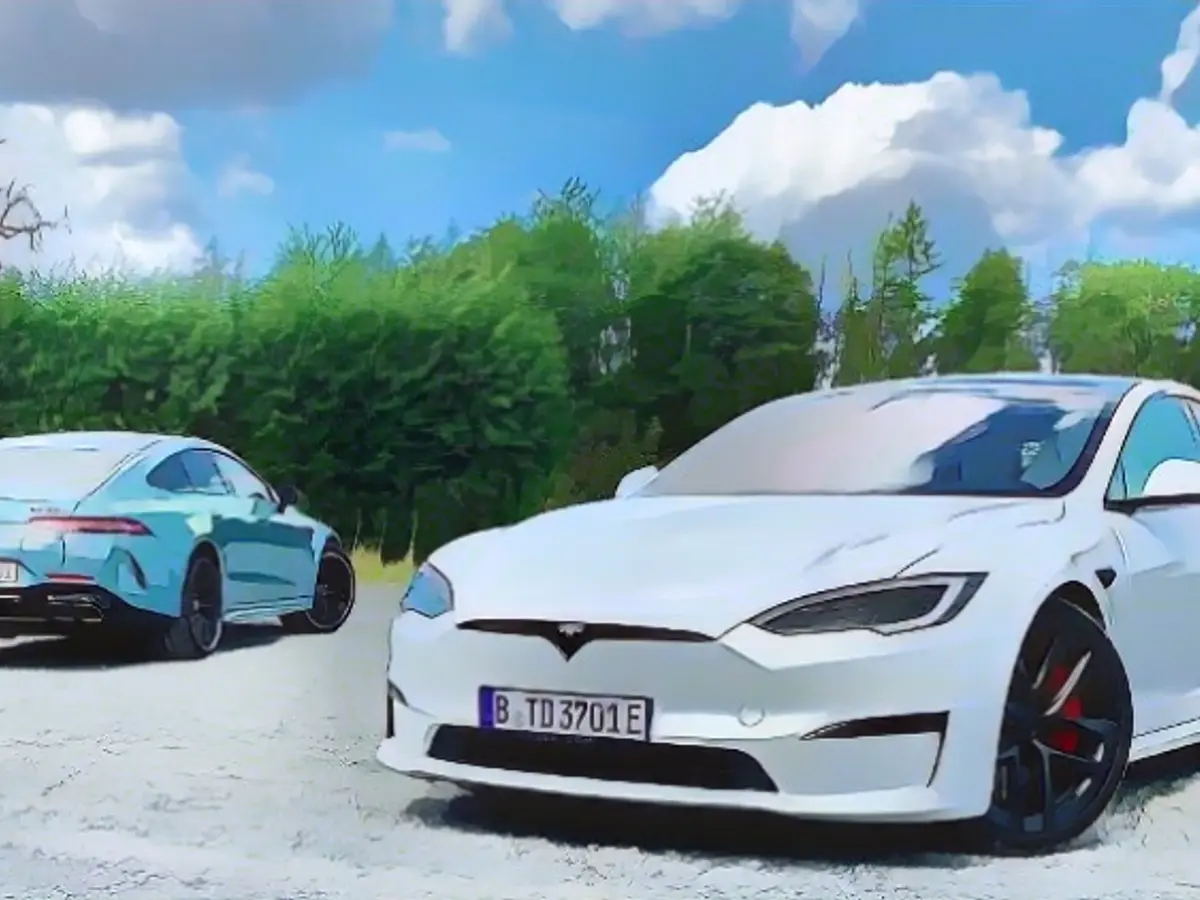1020 hp Tesla meets Mercedes-AMG GT 63 E-Performance
When the rumbling Mercedes-AMG GT 63 E-Performance with 843 hp meets what is probably the fastest saloon to date, there are no winners or losers. However, the silent but surreally nimble Tesla Model S Plaid with 1020 hp is highly polarizing. Is there a winner of hearts?
You can say what you like about Elon Musk's Tesla. His most absurd automotive creations are stirring up the mood in the car industry. As a result, both customers and car managers are becoming thoughtful, which over time leads to corresponding reactions from the competition. Most recently, it was the Cybertruck that sent shockwaves through the industry - Tesla polarizes, and that is probably the best form of advertising.
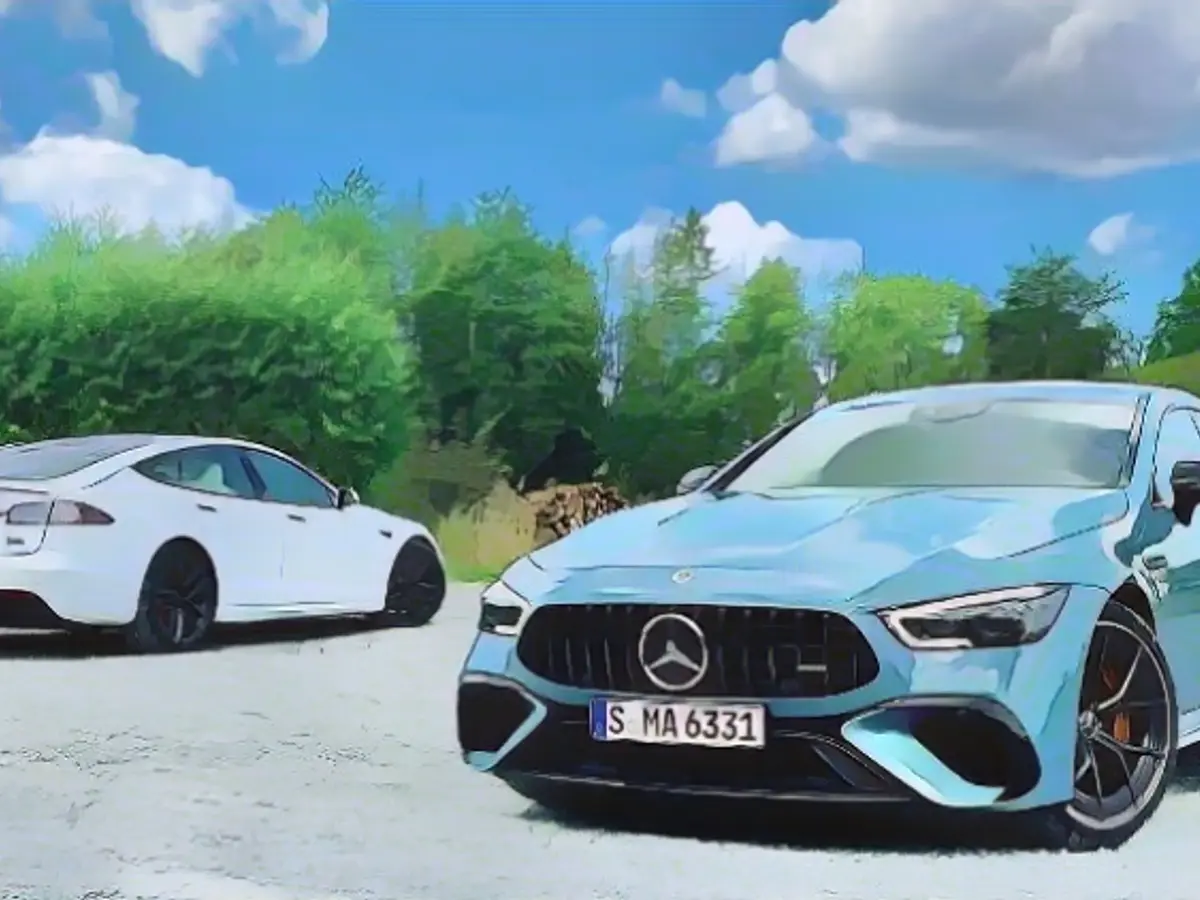
Whether the products always deliver what the Tesla website promises remains to be seen. Before the Cybertruck, the ultra-powerful Plaid models were the real excitement, even though other brands have already put 1000 hp cars on wheels. But a 322 km/h electrically powered saloon with 1020 hp for 109,990 euros? Where can you find something like that? Apparently not at Tesla either. Anyone surfing the website and clicking on the "maximum speed" link will be informed that this speed can only be achieved with a hardware upgrade for which a fee is charged. Then, for example, ceramic brakes will also be on board. The fun currently costs from 13,825 euros extra. But since Tesla lowered the base price for the Plaid in late summer from around 130,000 euros to 109,990 euros, this could soon be a thing of the past. And who knows how much the car will cost in a month or the middle of next year.
The Swabians are more binding when it comes to price. Mercedes-AMG is asking the proud sum of 208,006 euros and 5 cents for the most powerful GT with four doors. That's how much time it takes. Why this comparison of two at first glance completely different offers? Quite simply, the two similarly sized four-door models - the Mercedes measures 5.05 and the Tesla 5.02 meters in length - are the most powerful saloon representatives with electric and combustion engines. Even though the Benz is not a pure combustion engine. Its twin-turbocharged four-liter eight-cylinder engine has been paired with a 204 hp electric motor. But it doesn't matter, because the important thing is that the elegant all-wheel-drive vehicle roars like a genuine eight-cylinder - of course, such an engine is under its hood with the gentle powerdomes.
The two power saloons offer fabulous driving performance
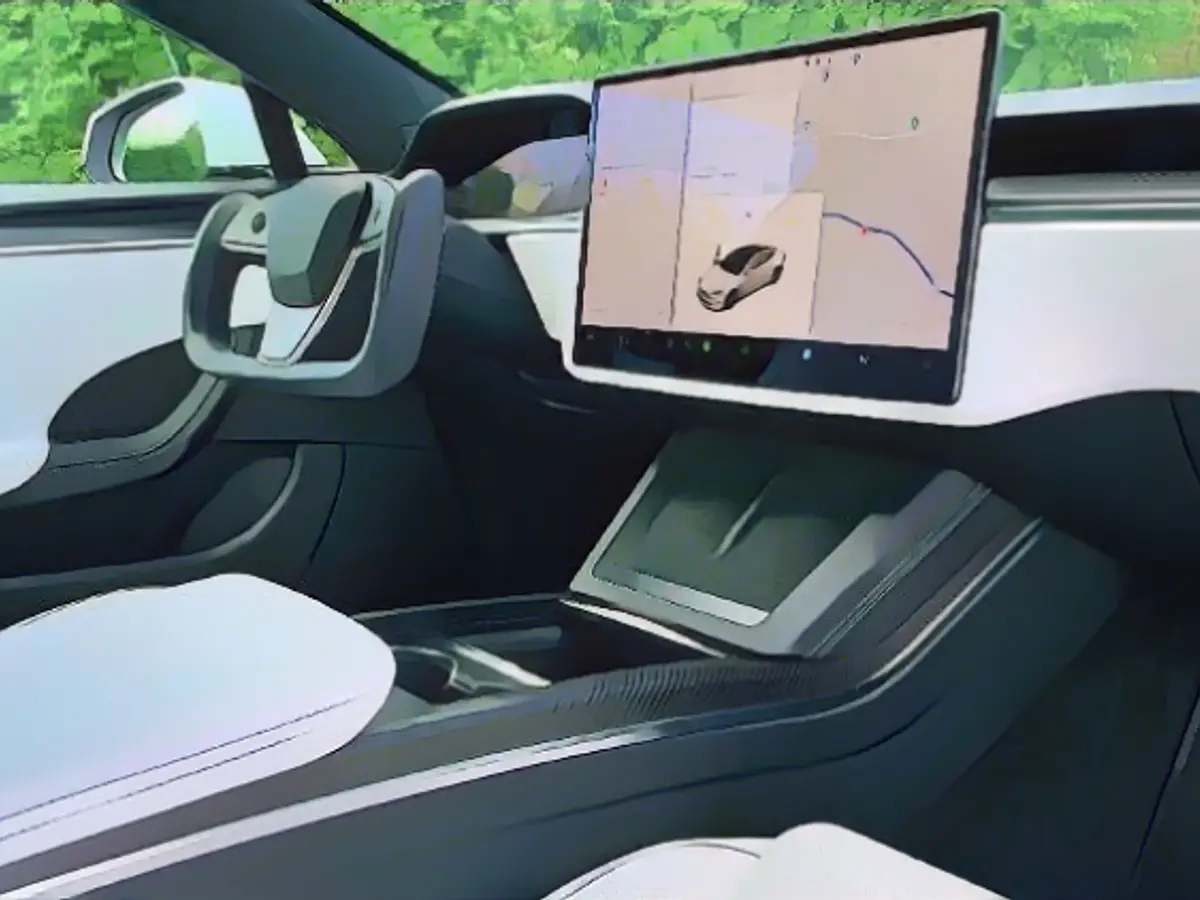
Before approaching the two rather inconspicuous saloons, whereby the Tesla is even more inconspicuous, one thing should be made clear: The powertrains are slowly entering performance spheres in which maximum power is either not reproducible (Tesla) or not permanently available at reasonable cost, as is the case with the Swabian's hybrid powertrain. It doesn't matter, you don't need over 800 hp all the time, and the PHEV's 639 hp combustion engine output is always available. And with this, the Mercedes easily breaks the 300 km/h sound barrier, even reaching 316 km/h according to the factory.
Mercedes-AMG quotes 2.9 seconds for the sprint to 100 km/h, while the Tesla should reach country road speed within 2.1 seconds. The 2.4-tonner from Affalterbach has just 6.1 kWh available for the boost (the Benz only drives a few kilometers purely electrically) - the power storage unit is designed to release energy quickly, but also to be able to absorb it again quickly through boost recuperation. Or by external charging with 3.7 kilowatts within 90 minutes.
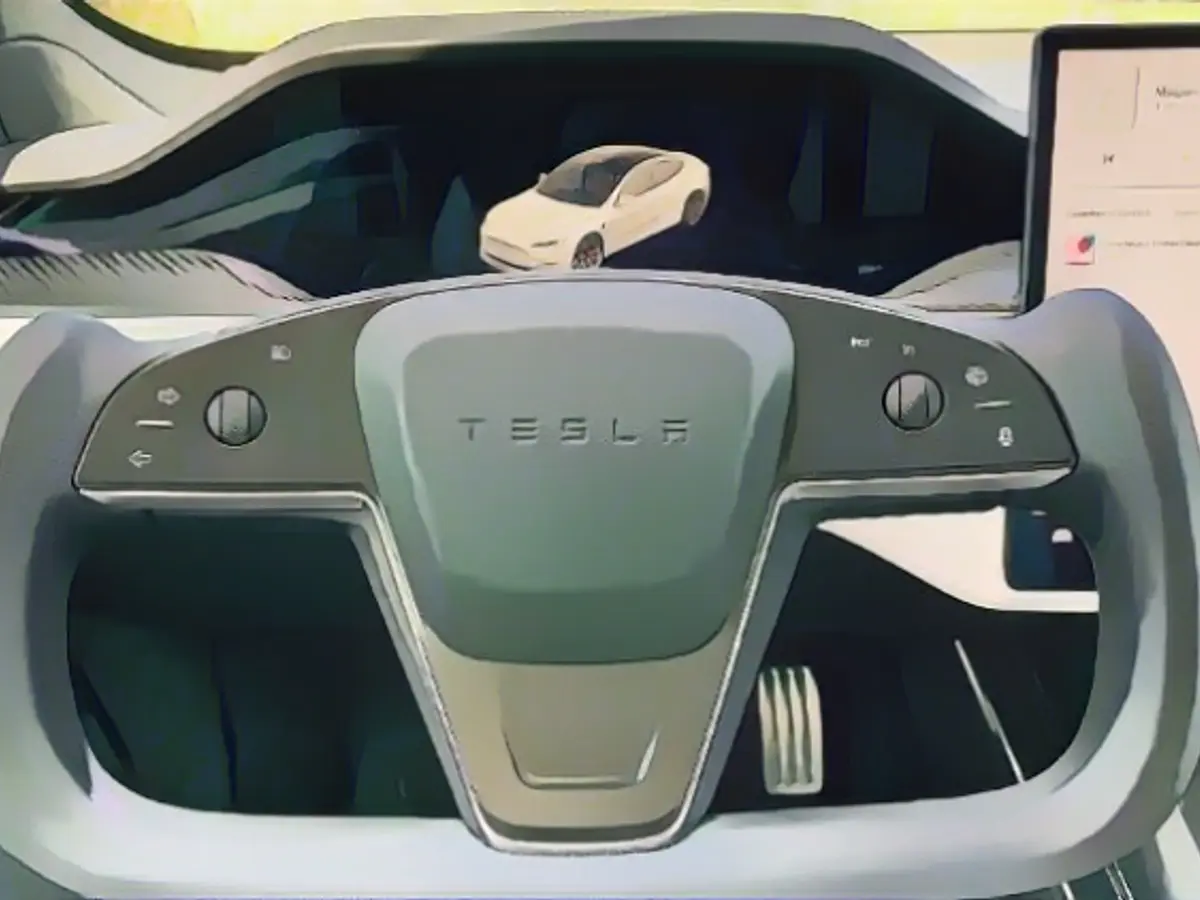
But back to the original question - which of the candidates competing here drives more emotionally? The power of the Tesla comes silently from behind. Without warning - there are no gears to sort through - the all-wheel-drive vehicle shoots off with its three engines (1424 Newton meters of torque), leaving the passengers with wrinkles on their faces. Whether it takes 2.1 or 2.8 seconds to reach 100 km/h is irrelevant. And on the unlimited highway, it quickly continues towards 300 km/h and even beyond if necessary.
Although there are no measurements from specialist magazines yet, the sprint from 0 to 200 km/h is likely to be somewhere in the region of six to eight seconds. The Mercedes needs just under ten seconds for this, as the specialist magazine "Sport Auto" recently found out. However, the Plaid also degrades quickly. If you switch to Race mode, you can no longer use cruise control, but you can monitor the battery and engine temperatures very nicely.
Several full-load accelerations in succession put a lot of strain on the drive unit, which is associated with a reduction in performance. As a precaution, Tesla also points out on its website that the maximum speed is not available for the entire journey. So showing the tail lights to a Porsche 911 Turbo S will only work in rare cases. And this is also likely to apply to the only slightly slower GT 63.
Mercedes and Tesla are strikingly different in style
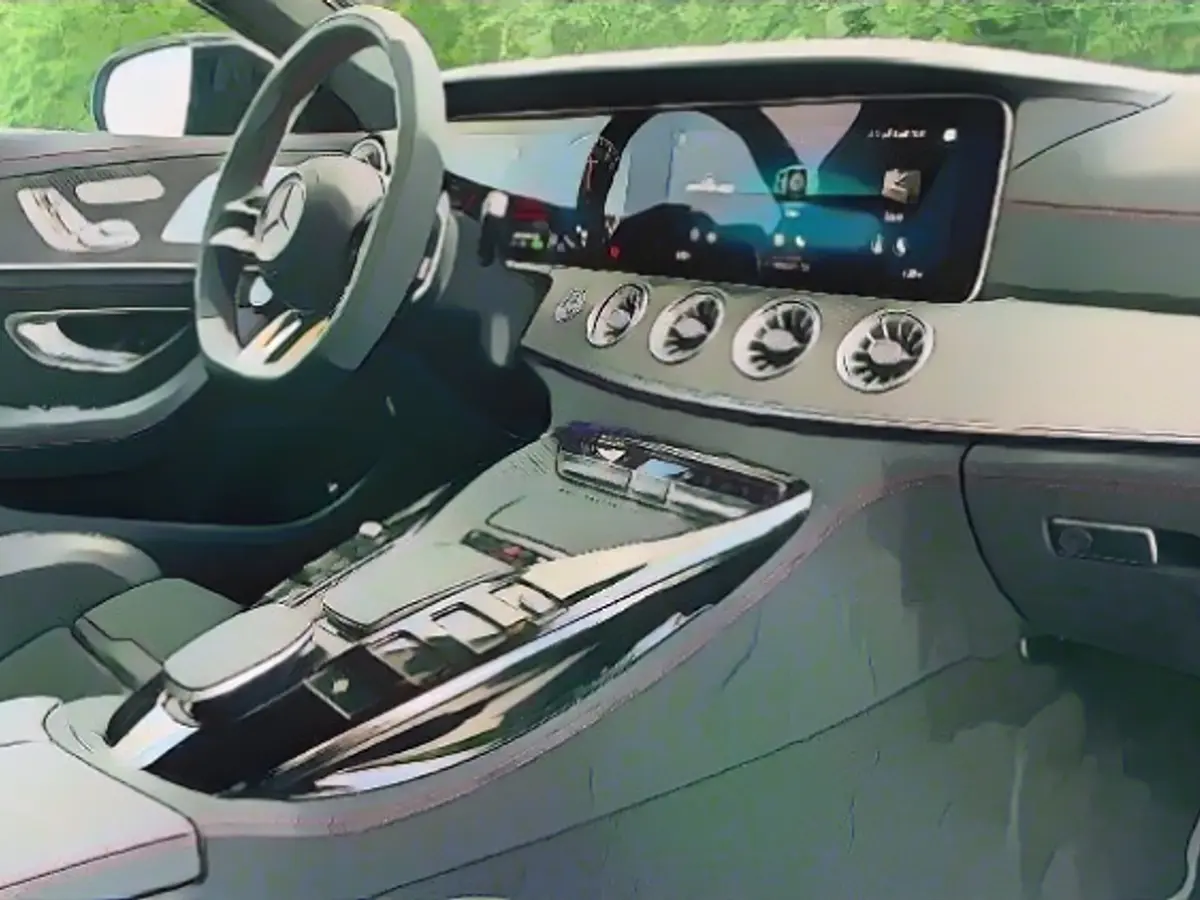
The fact is, however, that the 2.3-ton Plaid creates emotion through incredible acceleration, even if the potential is not always fully available. And in the lower speed range anyway. There is hardly a high-performance car that does not feel slow after the Plaid experience. Of course, the GT 63 strikes back. Firstly, with equally concentrated performance. And secondly with the V8 roar that hits you right in the heart.
Of course, you have to master the many modes, so which one makes you happiest? I simply configure something individual for myself. I don't need the suspension with air suspension and adaptive steering to be brutally hard, but I want the combustion engine to be nicely present. After all, driving the GT is a feast for the ears. Of course, spontaneous demand for power is always accompanied by a second's thought, because its wiry nine-speed automatic transmission with multi-plate clutch (the AMG versions do not have a torque converter) first has to engage the right gear. Alternatively, you can simply select the right gear ratio manually before the small sprint competition.
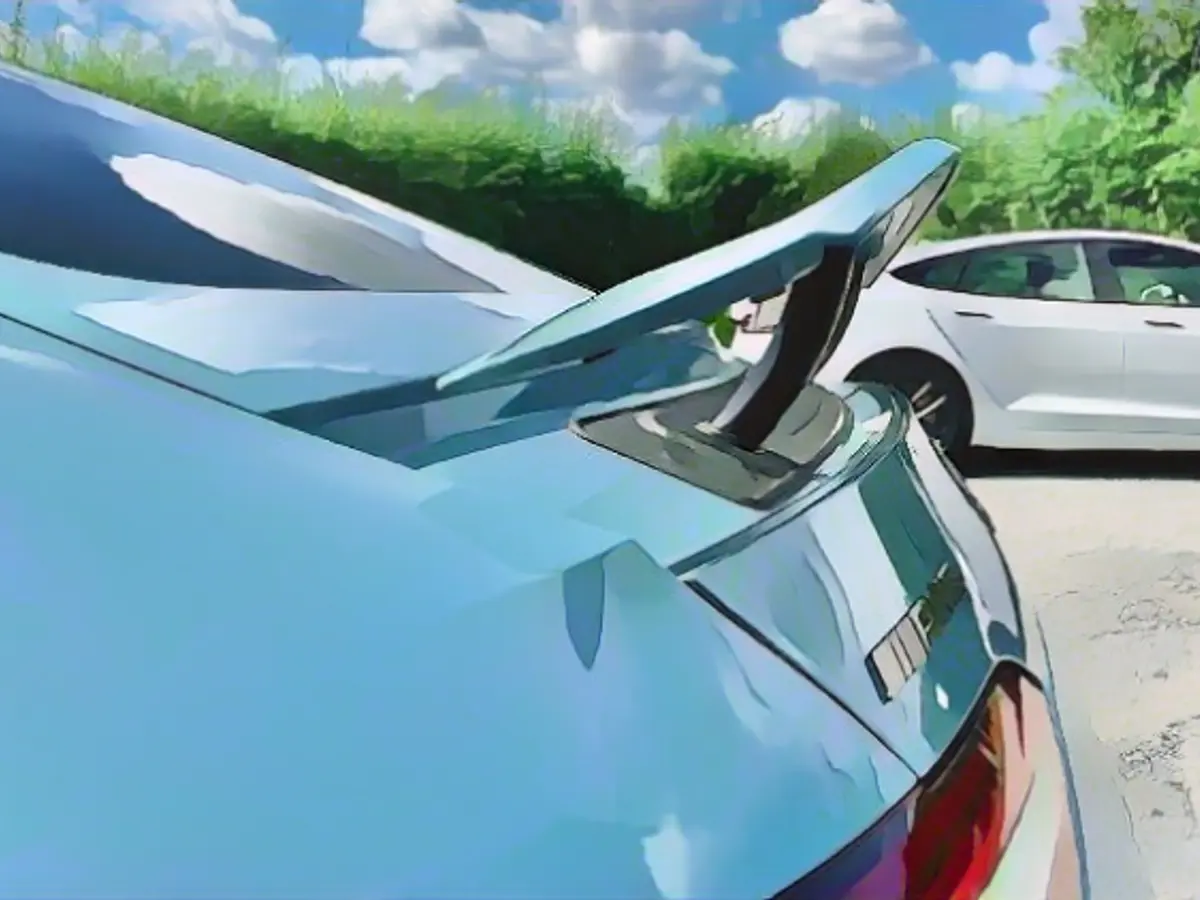
In addition to their incredible performance, both offerings are fine tourers with exquisite long-distance qualities and sufficiently comfortable air suspensions. The large Mercedes offers fine sports seats with a comfortable touch. It doesn't always have to be an S-Class for the long tour. The Tesla can also cover long distances with the usual habits that are so common in electrically powered vehicles. If you are traveling fast, you often end up at the Supercharger. Charging the Model S is not quite as fast as its acceleration, but it is quick. If the battery is at the right temperature, you can charge it for almost 150 kilometers within ten minutes when the state of charge is low. That's okay.
The combustion engine replenishes energy faster
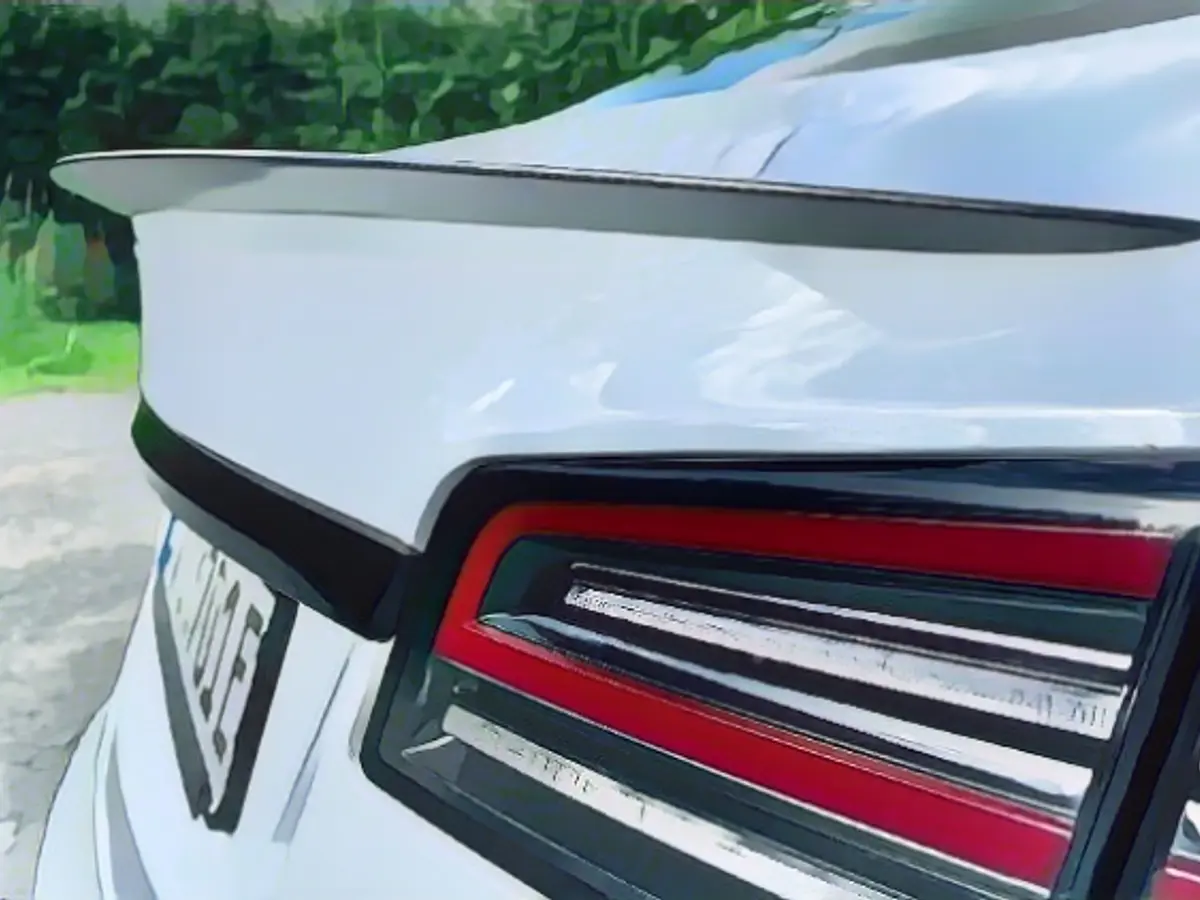
It's nice that the Tesla navigation system is intuitive and quick to use; the Supercharger stops are simply integrated into the route. GT-63 drivers don't have to deal with such issues. Within a maximum of five minutes, 73 liters of Super Plus are refilled - interestingly, the hybrid can sip from a seven-liter larger tank than the pure combustion engines. That's right. When it comes to infotainment, you can tell that the four-door GT has been on the market for a while. Instead of a hyper- or at least superscreen (Mercedes jargon), there is the tried-and-tested widescreen with two display units, on which, however, enough can already be displayed. When the beguiling eight-cylinder engine is roaring, the rest fades into the background anyway. The question remains: which one to choose?
Of course, both belong in a well-stocked collection. The Mercedes-AMG, because it combines a classic V8 with modern electrical technology and thus enables concentrated power and torque (1470 Newton meters) with manageable energy consumption. However, the high-tech eight-cylinder engine is efficient in itself and completes moderate laps with double-digit fuel consumption figures. And not to forget: its beguiling V8 sound touches the fans.
The Tesla is exceptional, especially as a plaid, and deserves a place in the garage of car enthusiasts. But the competition never sleeps. An ultra-powerful Lucid Air is on the way next year, as well as powerful models from Lotus and Polestar with electric drive. Last but not least, the Porsche Taycan is already in the middle of its life cycle. It's hard to believe that the Zuffenhausen-based company won't let its silent saloon grow stronger. So it remains exciting.
Read also:
- The surge of Tesla's electric cars, including the Model S Plaid, is prompting other automotive companies like Mercedes-AMG to explore electromobility options, as seen in their E-Performance models.
- As hybrid cars gain popularity, automotive testers are putting the Mercedes-AMG GT 63 E-Performance and Tesla Model S Plaid through their paces, evaluating their electric and hybrid powertrains.
- Tesla Motors has added Tesla's Plaid models to their offerings, joining the ranks of electric cars that challenge traditional combustion engine vehicles in terms of speed and power, like the Mercedes-AMG GT.
Source: www.ntv.de
